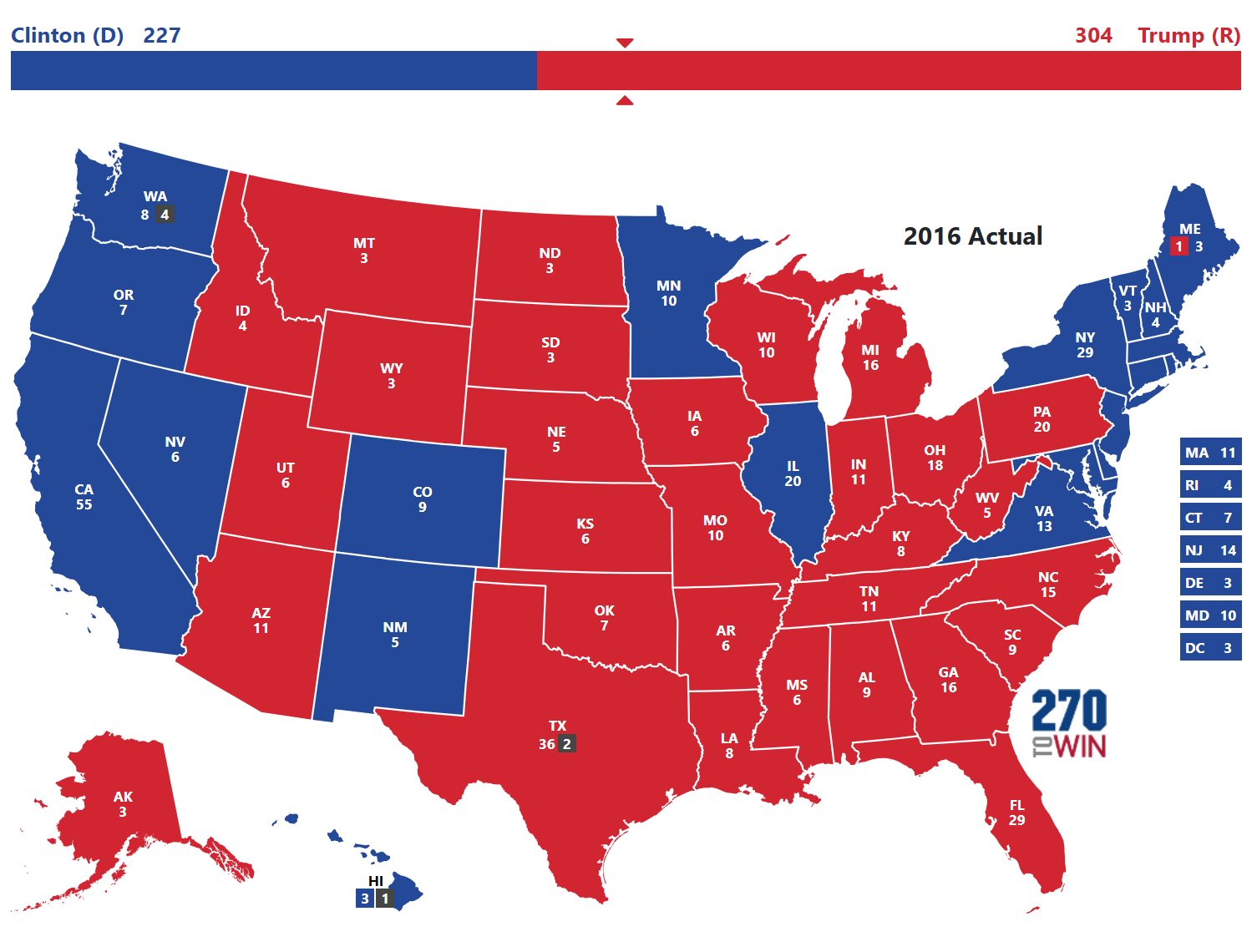

Numbers indicate electoral votes cast by each state. Red denotes states won by Lincoln/Hamlin, green by Breckinridge/Lane, orange by Bell/Everett, and blue by Douglas/Johnson. Together, they represent 195 Electoral College votes.Presidential Election results map. As of December 2022, 15 states and Washington, D.C., had adopted legislation to join the National Popular Vote Interstate Compact. The NPVIC would go into effect if states representing at least 270 electoral college votes adopt the legislation. The National Popular Vote Interstate Compact (NPVIC) is an interstate compact to award member states' presidential electors to the candidate that receives the most votes nationwide.

National Popular Vote Interstate Compact See also: National Popular Vote Interstate Compact For example, Clinton and Trump were separated by margins of less than one percent in Wisconsin, Michigan, and Pennsylvania. The third factor was several close races in battleground states with large populations. Donald Trump (R) won both of those states. Clinton also added significantly to her popular vote totals in Arizona and Georgia. Barack Obama’s (D) final vote count in Texas in 2012 was 3.3 million. In Texas, for example, she received 3.8 million votes. Similarly, Clinton performed well in several red states that she ended up losing. Large margins in these states inflated Clinton’s popular vote totals while doing little to offset her deficit in the Electoral College. First, Democratic nominee Hillary Clinton received significant support in populous blue states like New York and California, where together she received more than 13 million votes. The split in the 2016 presidential can be attributed to three main factors. 2016 presidential electionĪnalysis of split in the 2016 presidential election See also Presidential battleground states, 2016 The following chart shows the five presidential elections where there was a split between the Electoral College and the national popular vote or no candidate received a majority of the Electoral College vote. Splits between the Electoral College and national popular vote, 1824-2016 The framers viewed the Electoral College as "an actual decisionmaking body that would reduce the uncertain impact of popular participation and increase the likelihood that only well-qualified would be elected to the presidency," according to Benjamin Ginsberg, a professor of political science at Johns Hopkins University. The Electoral College system emerged as a compromise between the framers of the Constitution, who debated whether to elect the president by popular vote, Congress, or state legislatures. Electors have traditionally cast their votes for president in December, following the general election in November. The vote casters, known as electors, are chosen by rules differing in each state, but many are elected during each party's state conventions. In this system, each state receives a number of votes equal to the total number of their delegation to the United States Congress. The Electoral College is the process through which the president of the United States is elected to office, as outlined in Article II of the United States Constitution. What is the Electoral College? See also: Electoral College This page provides an overview of presidential elections that featured a split between the Electoral College and the popular vote. Since the national popular vote was first recorded in 1824, there have been four presidential elections where the winner won the Electoral College and lost the popular vote:Īdditionally, the winner of the 1824 presidential election, John Quincy Adams (Democratic-Republican), won neither the Electoral College nor the popular vote. 4 National Popular Vote Interstate Compact.3 Analysis of split in the 2016 presidential election.2 Splits between the Electoral College and national popular vote, 1824-2016.


 0 kommentar(er)
0 kommentar(er)
